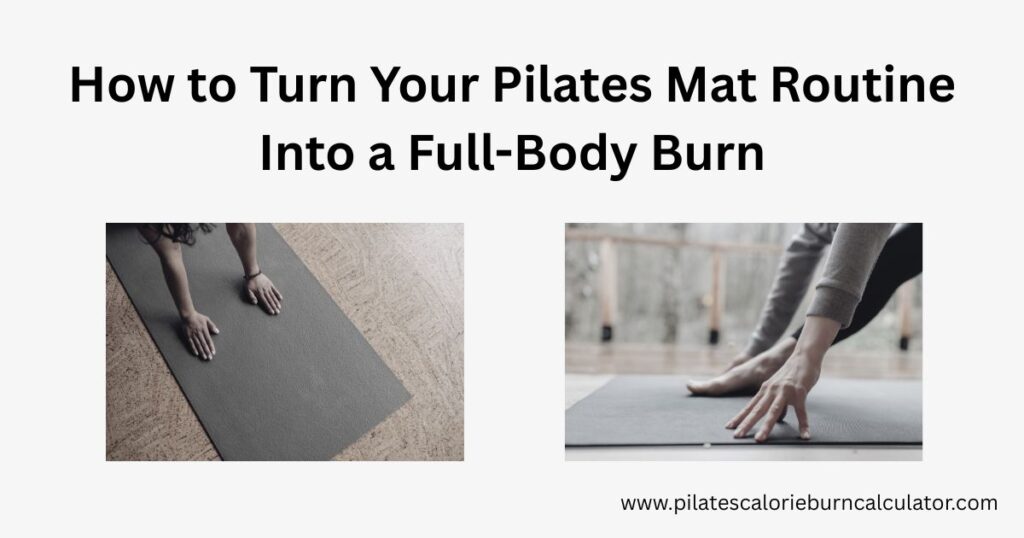
Pilates mat workouts are often associated with controlled, low-impact movements—but with the right approach, they can deliver a high-intensity, full-body burn that rivals traditional cardio and strength training. By optimizing pacing, sequencing, and progression, you can transform your mat routine into a muscle-sculpting, calorie-torching powerhouse session.
In this guide, we’ll break down the science behind elevating your Pilates intensity and provide actionable tips to take your practice from gentle to grueling.
Why Pilates Mat Workouts Can Be a Full-Body Challenge
Pilates is built on precision, control, and breathwork, but three key factors determine its intensity:
Time Under Tension (TUT) – Slowing down movements increases muscle fatigue.
Compound Sequencing – Linking exercises keeps the heart rate elevated.
Progressive Overload – Gradually increasing difficulty prevents plateaus.
When these elements are combined strategically, Pilates becomes a high-energy, full-body workout that enhances strength, endurance, and flexibility simultaneously.
3 Ways to Increase Intensity in Your Mat Routine
1. Adjust Your Pacing for Maximum Burn
Traditional Pilates: Slow, controlled transitions with pauses.
High-Intensity Approach: Faster transitions, continuous flow, and explosive variations.
Example:
Instead of holding the Hundred for 10 slow breaths, try pulsing your arms and legs for 50 quick pumps.
Replace static Plank holds with Plank-to-Pike movements for dynamic engagement.
Science-Backed Benefit:
A 2022 study in the Journal of Sports Science found that faster-paced Pilates increased calorie burn by 30% compared to traditional pacing.
2. Optimize Exercise Sequencing for Full-Body Fatigue
Instead of isolating muscle groups, chain exercises together to create a metabolic demand.
Sample High-Intensity Sequence:
Roll-Up → Teaser Hold (5 sec) → Roll Back Down (Core)
Plank → Single-Leg Kick → Push-Up (Upper Body + Core)
Side Plank with Leg Lift → Thread the Needle (Obliques + Shoulders)
Why It Works:
Minimizes rest periods, keeping the heart rate elevated.
Engages multiple muscle groups in a single sequence.
3. Use Progressive Overload to Keep Challenging Your Body
Pilates doesn’t require weights—leverage and body positioning can increase resistance.
Progression Techniques:
Increase range of motion (e.g., deeper stretches in Swan Dive).
Reduce stability (single-arm or single-leg variations).
Add pulses or isometric holds (e.g., hovering legs in Scissor Kicks).
Example Progressions:
| Beginner | Advanced |
|---|---|
| Bent-Knee Hundred | Straight-Leg Hundred with Pulses |
| Basic Roll-Up | Roll-Up with Weighted Ball |
| Standard Plank | Plank with Alternating Arm/Lift |
Sample High-Intensity Pilates Mat Routine
(Perform 3 rounds with minimal rest between exercises.)
1. Power Hundred
100 fast arm pumps with legs extended at 45°.
Focus: Engage deep core muscles while maintaining breath control.
2. Plank to Pike
From plank, lift hips into pike position, then return.
Advanced: Use sliders or towels under feet for added challenge.
3. Single-Leg Teaser
Balance on one leg while extending the other into a Teaser hold.
Progression: Add ankle weights.
4. Corkscrew with Pulse
Circle legs in a controlled motion, pulsing at the top.
Targets: Obliques, hip flexors.
5. Burpee to Roll-Up
Drop into a Pilates-style burpee, then explode up into a Roll-Up.
Boosts heart rate for cardio benefits.
Total Time: ~20-25 minutes
Calories Burned: ~250-400 (depending on effort)
Tips for Maximizing Results
Final Thoughts
Pilates mat workouts don’t have to be gentle—by manipulating pace, sequencing, and progression, you can turn them into a full-body, high-intensity session. Whether you’re looking to build strength, burn fat, or improve athletic performance, these techniques will push your limits without equipment.
Ready to feel the burn? Roll out your mat and get moving!
Share this with a friend who needs a mat workout upgrade!